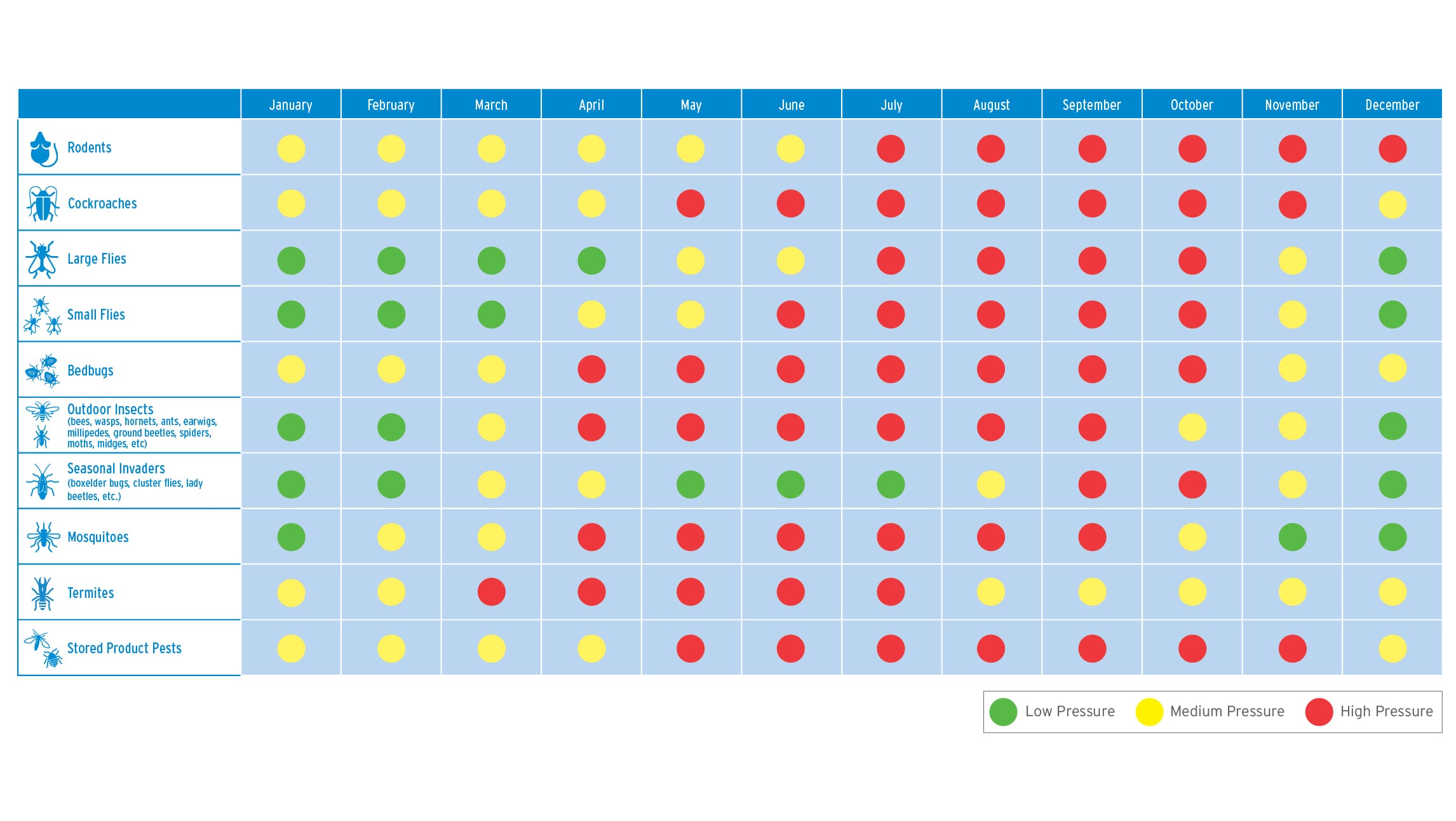Seasonal Pest Risks: Spring Brings New Pressures
The Pest Monitor Newsletter

A key example of how data-driven technology is transforming business and providing new value to customers, is Ecolab’s development of an algorithm to help predict pest risk in partnership with the Carlson School of Management, University of Minnesota (UMN).
As spring brings increasingly warming weather to the U.S., it also brings increasing risk of pests -- as shown in the Pest Pressure Calendar, which provides general pressure levels by pest for each month of the year. While pressures will vary by geography and facility type, the winter months tend to have low to medium pressure from most pests, with gradually increasing pressures beginning in April, and nearly all pest risk being at high levels by June or July. (To download a high-resolution version of the calendar and assess your specific pest risk, click here.)
While any of the listed pests could affect food & beverage processors at virtually any time of year, those that tend to cause the highest concern in these facilities beginning in the spring are:
- Cockroaches (May-November). Depending on species and geography, cockroaches can be a year-round issue. For example, German cockroaches thrive indoors and often enter with employee belongings or incoming supplies, so this species is less affected by seasonal changes. However, other cockroaches that can live outdoors in temperate weather, such as the American and Oriental, also can live and breed indoors. So as their numbers increase in the spring, so, too, can the food facility risks associated with them.
- Outdoor insects (April-September). Although many of the outdoor insects that come out of winter harborage in the spring prefer to stay outdoors, others will venture indoors, either accidentally or to escape inclement weather (such as heavy rains). As such, a food facility could see an increase in bees, wasps, hornets, ants, earwigs, millipedes, ground beetles, spiders, moths, midges, etc. around and in the food facility during these months.
- Stored product pests (May-November). Stored product pests can include a variety of species of beetles, weevils, and moths, with particular species generally associated with particular products. However, many of the most common stored product pests will overwinter in the larval stage, pupating, then emerging as adults in subsequent weeks. One of the most common of these is the Indian meal moth which undergoes “diapause” (a form of hibernation) over the fall and winter months, then emerges as an adult in the spring.
In addition to the natural increase of pest pressure of spring, 2021 is bringing with it the reopening of businesses in many states, due to decreasing cases of and increasing vaccinations against COVID-19. While we cannot yet be sure what this will mean for pest pressure, we can assume there will be some impact on the food industry. While many experts expect the online purchasing and restaurant take-out trends to continue, there is no question that there also will be an increase in in-restaurant dining and in-store shopping as consumers become comfortable with the post-COVID norms – which will impact the entire food supply chain.
Additionally, with the lockdown restrictions and business closures of the pandemic, some businesses cancelled their pest control altogether. While this caused some pests to seek out other food sources, it enabled other pests to settle down without interruption with food that remained in the building – to be revealed upon reopening.
As this could mean that manufacturers will need to increase or change suppliers to meet increased or changed demand, so it will be critical to ensure all suppliers are completely vetted, with thorough pest management programs in place. Manufacturers also are wise to ensure there is a systematic program for the inspection of incoming goods – to ensure a supplier’s pest problem don’t become theirs.


